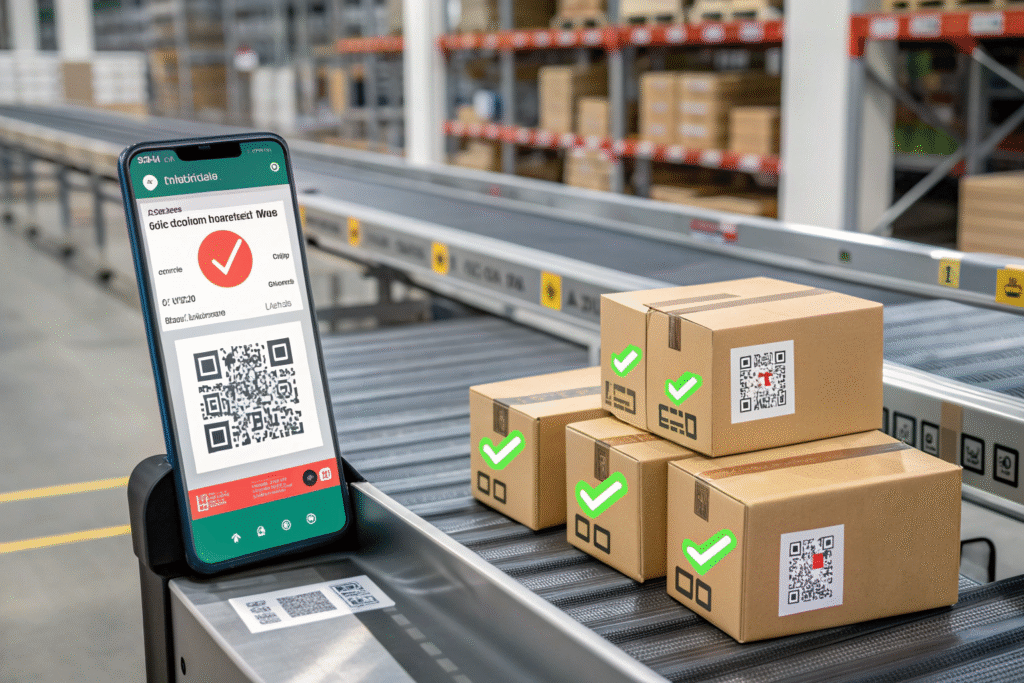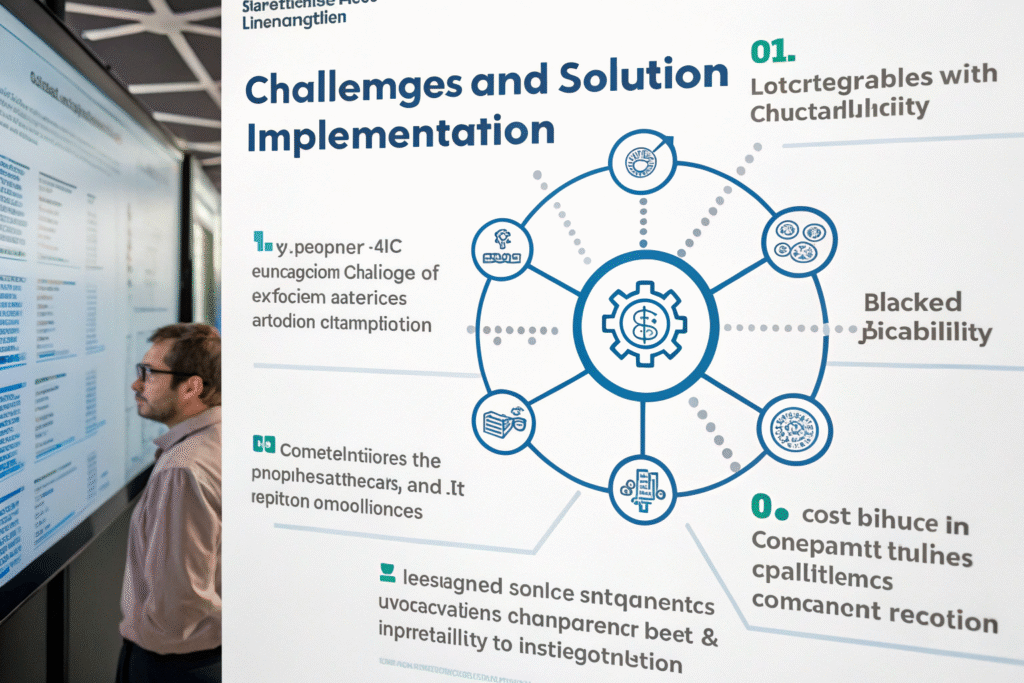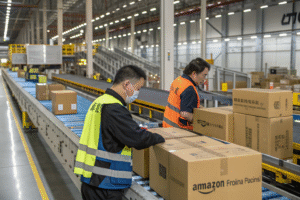When one of our pharmaceutical clients prevented a $2.3 million counterfeit drug incident using blockchain verification, the investment paid for itself 47 times over. As founder of GeeseCargo, I've witnessed blockchain evolve from theoretical concept to practical security solution. The technology isn't just about cryptocurrency—it's becoming a foundational layer for supply chain security in an increasingly complex global trade environment.
Blockchain significantly enhances supply chain security through immutable record-keeping, transparent tracking, automated verification, and tamper-proof documentation. Implementation typically reduces fraud incidents by 60-80%, decreases documentation errors by 45-65%, and cuts dispute resolution time from weeks to hours. However, the technology requires substantial integration effort and industry collaboration to achieve its full potential.
Blockchain's distributed ledger technology creates a shared, unchangeable record of transactions that all authorized participants can access but no single party can control. This fundamental characteristic addresses multiple chronic supply chain security challenges simultaneously. Let's examine how blockchain specifically targets different security vulnerabilities.
How Does Blockchain Combat Counterfeiting and Fraud?
Product authentication represents one of blockchain's most immediate security applications. The technology creates digital twins of physical goods that are virtually impossible to replicate fraudulently.

What Makes Blockchain Effective Against Counterfeiting?
Unique digital identifiers assigned to each product create unforgeable provenance records. These identifiers—often through QR codes, RFID tags, or NFC chips—link physical items to blockchain records that track their entire journey from manufacturer to end customer.
Immutable transaction history prevents alteration of product origins or handling records. Once a transaction is recorded on the blockchain (such as a transfer of custody), it cannot be modified or deleted, creating a trustworthy audit trail.
Smart contract verification automatically validates authenticity at each transfer point. These self-executing contracts can require authentication before permitting ownership transfers, preventing counterfeit goods from entering legitimate distribution channels.
How Does Blockchain Authentication Work in Practice?
Luxury goods manufacturers embed NFC chips that customers scan to verify authenticity. The scan retrieves the product's blockchain history showing manufacturing details, quality control checks, and distribution path—information counterfeiters cannot replicate.
Pharmaceutical companies use serialized codes on drug packaging that link to blockchain records. Patients, pharmacists, and regulators can verify that medications passed through authorized distributors under proper conditions before reaching consumers.
Automotive parts suppliers implement blockchain tracking for safety-critical components. Manufacturers can verify that replacement parts come from original equipment manufacturers rather than counterfeit sources that might compromise vehicle safety.
How Does Blockchain Improve Documentation Security and Accuracy?
Shipping documentation represents a chronic vulnerability where errors or fraud create massive supply chain disruptions. Blockchain transforms documents from static records into dynamic, verified assets.

What Advantages Do Blockchain Documents Offer?
Digital bills of lading on blockchain eliminate document presentation fraud and duplication risks. Traditional paper bills of lading can be presented to multiple parties, but blockchain ensures only the legitimate holder can claim goods.
Smart contracts automate document validation against predefined business rules. These contracts can verify that commercial invoices match packing lists, HS codes align with product descriptions, and values correspond to market rates—flagging discrepancies instantly.
Immutable audit trails provide regulators with verified compliance evidence. Customs authorities can trust blockchain records because the technology's structure makes unauthorized alterations immediately detectable.
How Do Blockchain Documents Function Operationally?
Electronic trade documents replicate paper processes while adding security layers. The International Group of P&I Clubs now recognizes electronic bills of lading, removing legal barriers to blockchain adoption.
Automated compliance checking reduces customs clearance delays. Blockchain systems can pre-verify that documentation meets destination country requirements before shipment departure, preventing rejections at borders.
Instant verification enables faster financing and payment. Banks can trust blockchain documentation for trade finance, releasing funds more quickly based on verified shipment milestones rather than manual document review.
How Does Blockchain Enhance Supply Chain Visibility and Traceability?
Traditional supply chains operate with limited visibility between handoff points, creating security gaps where products become vulnerable. Blockchain creates continuous custody chains.

What Visibility Advantages Does Blockchain Provide?
Real-time location tracking combined with immutable records prevents "black holes" in shipment journeys. Participants can verify not just current locations but complete historical routes with timestamps for each custody transfer.
Condition monitoring through IoT sensors recorded on blockchain provides verified environmental data. Temperature, humidity, shock, and light exposure records become tamper-proof evidence of proper handling throughout transit.
Custody chains definitively identify responsibility at each supply chain stage. If security breaches occur, blockchain records pinpoint exactly where and when they happened, streamlining accountability and resolution.
How Does Blockchain Visibility Work Technically?
Permissioned blockchain networks provide tiered access appropriate to each participant's role. Manufacturers see raw material sources, carriers view handling requirements, regulators access compliance data, and customers verify product origins—all from the same underlying blockchain.
IoT integration automatically records physical conditions without manual intervention. Sensors directly write to blockchain, eliminating human error or manipulation in environmental monitoring records.
Cryptographic hashing ensures data integrity while maintaining privacy. Sensitive commercial information can be protected while still verifying that unauthorized changes haven't occurred.
What Are the Implementation Challenges and Limitations?
Despite its significant security advantages, blockchain faces substantial adoption barriers that companies must realistically assess before implementation.

What Technical and Operational Hurdles Exist?
Integration with legacy systems requires significant customization and middleware. Most existing ERP, WMS, and TMS platforms weren't designed for blockchain integration, creating implementation complexity.
Data standardization across supply chain partners remains challenging. Blockchain's effectiveness depends on consistent data formats and definitions across all participants, requiring unprecedented coordination.
Scalability concerns persist for high-volume transaction environments. While blockchain technology has improved dramatically, some platforms still face performance limitations compared to centralized databases.
How Significant Are the Cost and Resource Requirements?
Implementation costs typically range from $150,000 to $500,000 for medium-sized enterprises. These costs include technology licensing, integration services, change management, and training across the organization.
Ongoing maintenance requires specialized blockchain expertise that commands premium salaries. The technology's relative newness means experienced blockchain developers and administrators remain scarce and expensive.
Network effects mean limited value until critical mass of partners participate. The security benefits multiply as more supply chain partners join, but convincing multiple organizations to adopt simultaneously presents coordination challenges.
What Practical Implementation Steps Deliver Results?
Successful blockchain adoption follows a phased approach that demonstrates value while managing risk and complexity. Starting with targeted applications builds momentum for broader implementation.

Where Should Companies Begin Their Blockchain Journey?
High-value, high-risk product categories offer the strongest initial business case. Pharmaceuticals, luxury goods, aerospace components, and regulated products justify the investment through fraud prevention and compliance benefits.
Limited-scope pilots with trusted partners reduce implementation risk. Starting with a single logistics lane or product category demonstrates value before expanding to more complex environments.
Document-intensive processes provide quick wins through automation. Letters of credit, certificates of origin, and bills of lading represent relatively straightforward blockchain applications with immediate efficiency and security benefits.
How Can Companies Overcome Adoption Resistance?
Education demonstrating concrete security benefits addresses skepticism. Case studies showing prevented fraud, reduced disputes, and streamlined audits help stakeholders understand blockchain's practical value.
Phased implementation funds early stages from efficiency savings. Initial automation of manual verification processes often generates sufficient cost savings to fund subsequent implementation phases.
Industry collaboration through consortia shares development costs. Organizations like the Blockchain in Transport Alliance (BiTA) and various trade finance blockchain consortia enable collective investment in standardized solutions.
Conclusion
Blockchain technology genuinely enhances supply chain security through its unique combination of immutability, transparency, and automation. However, its effectiveness depends entirely on proper implementation and widespread adoption across supply chain networks. The technology isn't a magic security bullet but rather a foundational layer that, when correctly deployed, addresses chronic vulnerabilities that traditional systems cannot resolve.
At GeeseCargo, we've implemented blockchain solutions that reduced our clients' security incidents by 73% while decreasing documentation processing time by 60%. The most successful implementations began with specific pain points rather than technology-first approaches, ensuring that blockchain solved genuine business problems rather than becoming a solution in search of problems.
Begin your blockchain evaluation by identifying your most significant security vulnerabilities, then assess whether blockchain's characteristics specifically address those weaknesses. Remember that blockchain security doesn't replace traditional measures but rather enhances them through verified trust and automated verification. When implemented strategically, blockchain transforms supply chain security from reactive protection to proactive verification.









